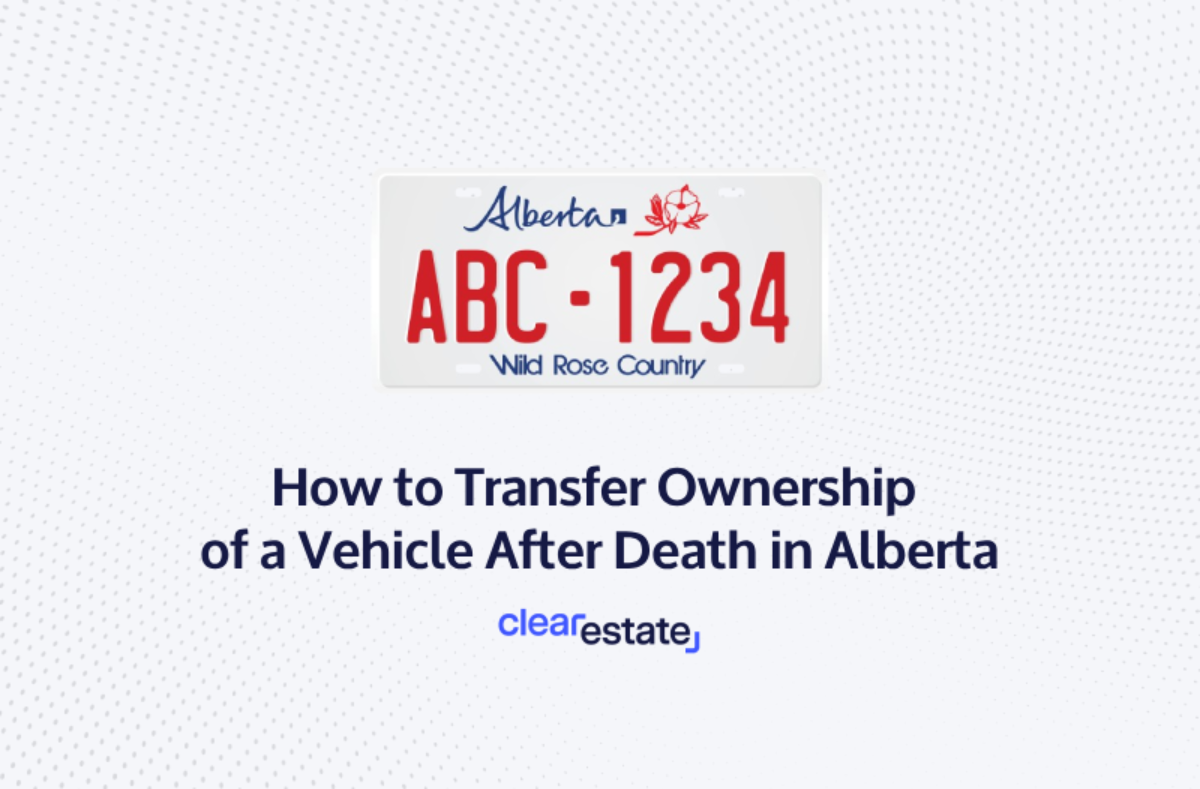Estate Settlement
Dec 04, 2024
How Do Executors Mail Inheritance Checks?
Find out how inheritance checks are mailed, including security measures and what to do if there are delays in receiving them.
Understand the steps to transfer a vehicle in Alberta after a death of the owner, whether there's a will or not. Our guide lays out the process in a step-by-step format.


When a loved one passes away, not only do they leave behind loved ones, but they also leave behind their possessions - including vehicles.
Which raises the question: What happens to the deceased's vehicle and how do they get transferred for sale or for beneficiaries?
In Alberta, transferring vehicle ownership after someone has died can be a straightforward process if the deceased left behind a will, but if the deceased passed away without a will…the transfer process may require further guidance.
Our guide is designed to walk you through each step with empathy and clarity, ensuring that the transfer honours the memory of the deceased and complies with provincial regulations.
In Alberta a vehicle is considered as part of the estate meaning that who can inherit the vehicle is regulated by two different circumstances: if there is a will or there is no will.
If there is a will, the vehicle will be transferred following the deceased wishes as outlined by the executor through a process called Probate.
If there is no will the vehicle will go through intestate succession priority and be transferred in accordance to intestate succession law which prioritizes spouses and immediate family.
Regardless of how the vehicle is passed down the methods and process for transferring a vehicle’s ownership are relatively the same.
In Alberta, the transfer process is akin to registering the vehicle in the new owner's name, similar to a sale transaction. It involves completing necessary forms and documentation through Alberta Registries, the provincial agency responsible for vehicle registration, licensing, and vital records services like birth and death certificates, land titles, and corporate registry.
Before heading to the Alberta registry office, make sure you have gathered all the necessary documents. This preparation is crucial to ensure a smooth transfer process.
Tip: Keep multiple copies of these documents as you might need them for different steps of the process.
Ensure that the vehicle’s insurance is updated to reflect the change in ownership or maintained until the transfer is complete.
Locate the nearest registry office using the Alberta Government’s Alberta Motor Association office locator tool. Here, you will obtain and fill out the necessary forms.
Insight: Completing these forms accurately is critical. Double-check all entries for errors to avoid delays.
This stage involves submitting your documents and any applicable fees. If you are selling the vehicle, you will need to sign over the registration to the new owner.
After all forms are processed, you will receive a new registration certificate with the new owner's details. This should be stored in the vehicle if it is to be used.
Reminder: The timing of your actions can be crucial. If the vehicle is not being used and is stored on private property, you may defer re-registration until you decide to use it.
Transferring vehicle ownership after the death of a loved one is an important part of settling their estate. This guide provided you with a straightforward, step-by-step approach to ensure that the documentation and registration processes are handled efficiently and in compliance with Alberta's legal requirements.
Key Takeaways:
With this guide, you are well-equipped to manage the vehicle ownership transfer confidently, ensuring the process is both manageable and respectful of the deceased's legacy.
Need Further Assistance? If you're handling an estate and probate and need help with the vehicle transfer process, feel free to reach out. Book a free consultation with us today to get all the support you need during this challenging time. Our expert team is ready to assist you every step of the way.
 Simplify Probate Today
Simplify Probate Today
Get expert guidance from our probate specialists who've helped 10,000+ families.
Book a free consultation today